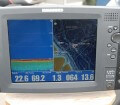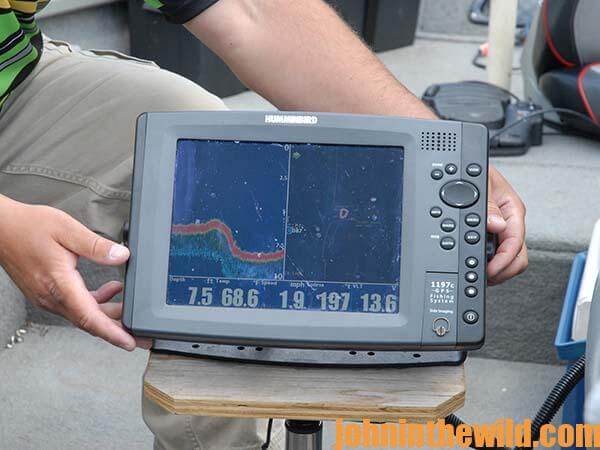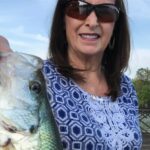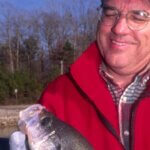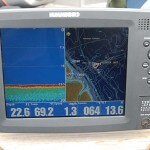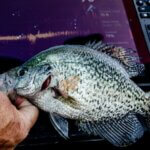John’s Note: Even with technological and informational advances in recent years, crappie anglers often have three misconceptions about crappie fishing, including: persons who fish for crappie are bound to the crappie holding structure they can see; crappie anglers have to stop fishing when the crappie quit biting; and crappie fishermen who pinpoint productive locations must keep them secret from other anglers. But today’s crappie anglers are catching more and bigger fish than ever before, and here’s how they’re doing it.
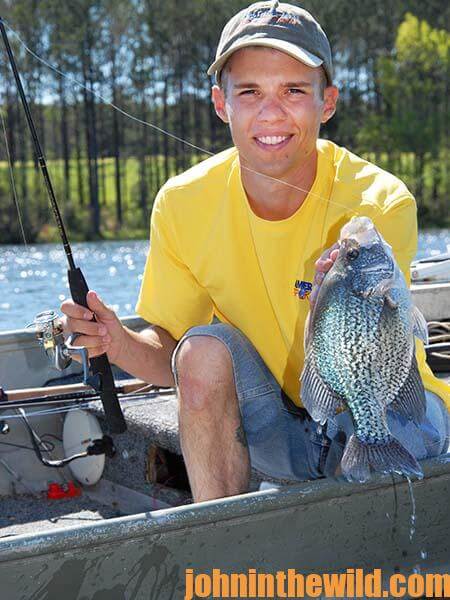 Crappie relate to structure, and one of the best ways to find schools of crappie is to locate structure.
Crappie relate to structure, and one of the best ways to find schools of crappie is to locate structure.
However, not all schools of crappie stay on structure all the time. There may be as many schools of roaming crappie to be caught as there are structure-oriented crappie. These roaming schools are fish that aren’t dependable day after day, since they are often on the move all day long. Although some anglers use their depth finders to find the rovers, other anglers troll for them. “I use six rods to find the rovers,” my friend Billy Thomas says. “I’ll troll six different colored, 1/16 ounce jigs at six-various depths until I locate crappie. Depending on the time of the year I’m angling, I’ll set my lines to hold jigs from about 6 to 12 feet deep. Once I determine the depth at which the crappie are holding, I either raise or lower the lines so that they all troll at the same depth.
I believe one important factor in tight-line trolling for crappie is the pound test line you use.
I like 4 pound test line. The limper and smaller the line is, the easier it can knife through the water. By using smaller line, your line doesn’t bow as much from the force of the moving water. I also troll very, very slowly. I try to move as slowly as the boat can go when the trolling motor is set on SLOW. 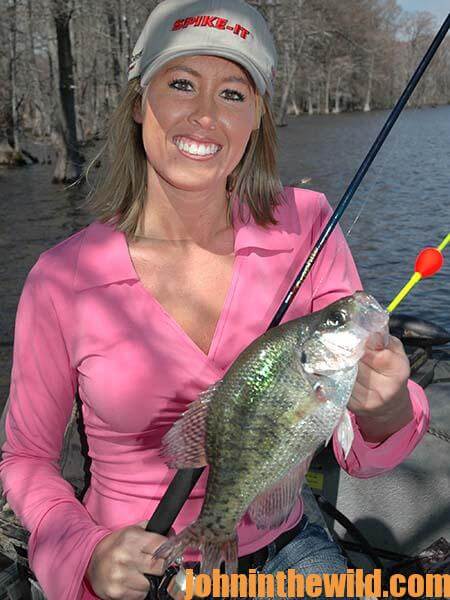
Often I will cut the motor off to slow down the speed of the boat. The areas I have found to be the most consistent for producing crappie are the mouths of creeks and the edges of old creek channels and river channels. Not all the crappie will be holding on bottom structure. They often move in and out of creeks and up and down ledges. Once I find the rovers, I either troll back and forth through them or cast to the school until it moves. Then I attempt to relocate the school by trolling again.”
Maintaining a tight line at a certain depth is often a problem for some anglers. However, there is an easy remedy and one that can cause a lot more action on your jig. “The little thumb size cork that minnow fishermen use will easily float a 1/16 ounce jig,” Gordon Elkins, a longtime crappie fisherman, says. “And, by setting the line at the depth you want to fish with the cork, you make sure your jig stays where you want to troll.” With the cork, the angler also has the option of fishing as close to or as far away from the boat as he prefers.
The pulsing action that the cork gives the jig as it comes through the water makes the jig appear more lifelike. Although I utilize this trolling method to pinpoint crappie, I use my minnows and cane poles to catch the most and biggest crappie out of the school, once I locate the school. I believe you can find more crappie by trolling a jig than you can by fishing a minnow. However, I generally feel I catch more crappie on minnows than I do jigs.”
To learn more about crappie and how to fish for them from the masters of the sport, get “Crappie: How to Catch Them Spring and Summer,” a new eBook from Amazon’s Kindle by John E. Phillips. Also, you can learn more about crappie fishing from the Reelfoot Lake pros by purchasing the Kindle eBook, “Reelfoot Lake: How to Fish for Crappie, Bass, Bluegills and Catfish & Hunt for Ducks” by John E. Phillips. Click here to get theses books.
About the Author
John Phillips, winner of the 2012 Homer Circle Fishing Award for outstanding fishing writer by the American Sportfishing Association (AMA) and the Professional Outdoor Media Association (POMA), the 2008 Crossbow Communicator of the year and the 2007 Legendary Communicator chosen for induction into the National Fresh Water Hall of Fame, is a freelance writer (over 6,000 magazine articles for about 100 magazines and several thousand newspaper columns published), magazine editor, photographer for print media as well as industry catalogues (over 25,000 photos published), lecturer, outdoor consultant, marketing consultant, book author and daily internet content provider with an overview of the outdoors.

